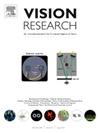Photic drive response in people with epilepsy: Exploring the interaction with background alpha rhythm
IF 1.4
4区 心理学
Q4 NEUROSCIENCES
引用次数: 0
Abstract
Photic drive responses (PDRs) are used to explore cortical hyperexcitability. We quantified PDRs and interactions with the alpha rhythm in people with epilepsy (PwE). Fifteen PwE (mean age ± SD 47.3 ± 4.6 years; 8 males), and 15 control subjects (mean age 52.7 ± 4.6 years; 9 males) underwent EEG with modified intermittent photic stimulation (IPS). The modification allowed so-called alpha-band gain to be measured. None of the PwE had demonstrated photosensitivity. The modified IPS method alternated eyes-open and eyes–closed conditions with and without IPS. The alpha-band gain appeared as N-fold changes in PDR when IPS (or its harmonics) and the alpha-bands overlapped. An epileptic attack within 1 month of testing significantly increased alpha-band gain by 1.36×. Generalised epilepsy (but not focal epilepsy) significantly decreased alpha-band gain y 0.79×. Each decade of age beyond the mean age significantly increased alpha-band gain by 1.09×. Similar significant interactions were seen between alpha and the second harmonic of IPS driving frequencies that matched alpha frequencies, i.e. for recent attack and, generalized epilepsy. The interactions thus appeared to be occurring between cortical IPS outputs and the alpha generator. These changes were most evident at electrodes O1 and O2. Investigating alpha-band gain using modified IPS offers a way to quantify cortical hyperexcitability in epilepsy and other diseases. It also provides new information about alpha and so too predictive coding, which appears to be at least partly governed by alpha.
癫痫患者的光驱反应:探索与背景α节律的相互作用。
光驱动反应(PDRs)被用来研究皮层的高兴奋性。我们量化了pdr和癫痫患者(PwE) α节律的相互作用。15名PwE(平均年龄±SD 47.3±4.6岁;男性8例),对照组15例(平均年龄52.7±4.6岁;9名男性)采用改良的间歇光刺激(IPS)进行脑电图。这种修改允许测量所谓的α波段增益。PwE均未表现出光敏性。改良的IPS方法在有IPS和没有IPS的情况下交替进行睁眼和闭眼。当IPS(或其谐波)与α带重叠时,PDR的α带增益表现为n倍的变化。测试1个月内癫痫发作显著增加α频带增益1.36倍。全面性癫痫(非局灶性癫痫)显著降低α频带增益0.79×。超过平均年龄每10年,α波段增益显著增加1.09倍。与α频率相匹配的IPS驱动频率的α和二次谐波之间也存在类似的显著相互作用,即用于最近发作和全面性癫痫。因此,相互作用似乎发生在皮层IPS输出和α发生器之间。这些变化在电极O1和O2处最为明显。利用改良IPS研究α带增益提供了一种量化癫痫和其他疾病的皮质高兴奋性的方法。它还提供了关于阿尔法和预测性编码的新信息,而预测性编码至少在一定程度上是由阿尔法控制的。
本文章由计算机程序翻译,如有差异,请以英文原文为准。
求助全文
约1分钟内获得全文
求助全文
来源期刊

Vision Research
医学-神经科学
CiteScore
3.70
自引率
16.70%
发文量
111
审稿时长
66 days
期刊介绍:
Vision Research is a journal devoted to the functional aspects of human, vertebrate and invertebrate vision and publishes experimental and observational studies, reviews, and theoretical and computational analyses. Vision Research also publishes clinical studies relevant to normal visual function and basic research relevant to visual dysfunction or its clinical investigation. Functional aspects of vision is interpreted broadly, ranging from molecular and cellular function to perception and behavior. Detailed descriptions are encouraged but enough introductory background should be included for non-specialists. Theoretical and computational papers should give a sense of order to the facts or point to new verifiable observations. Papers dealing with questions in the history of vision science should stress the development of ideas in the field.
 求助内容:
求助内容: 应助结果提醒方式:
应助结果提醒方式:


